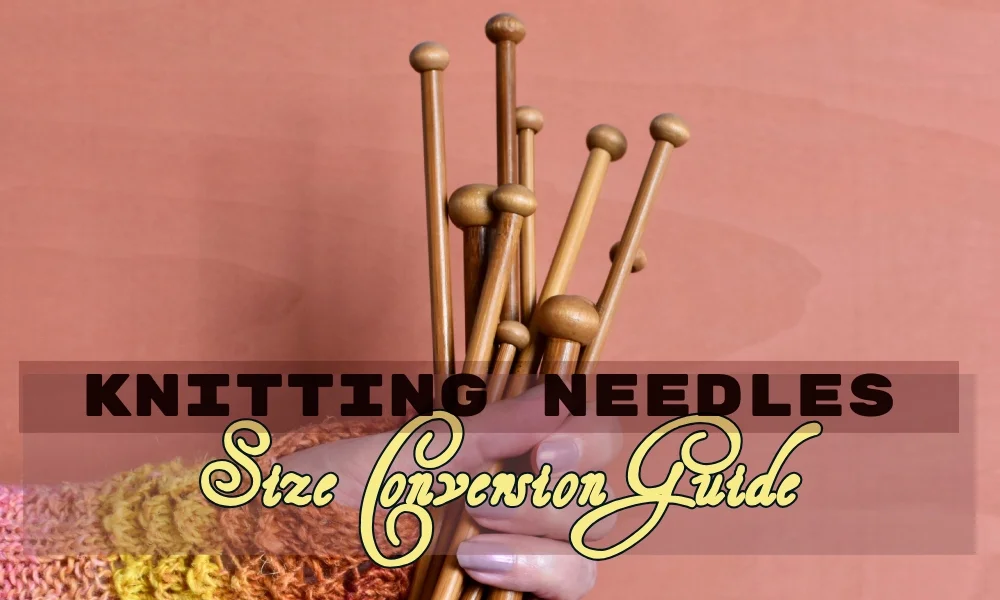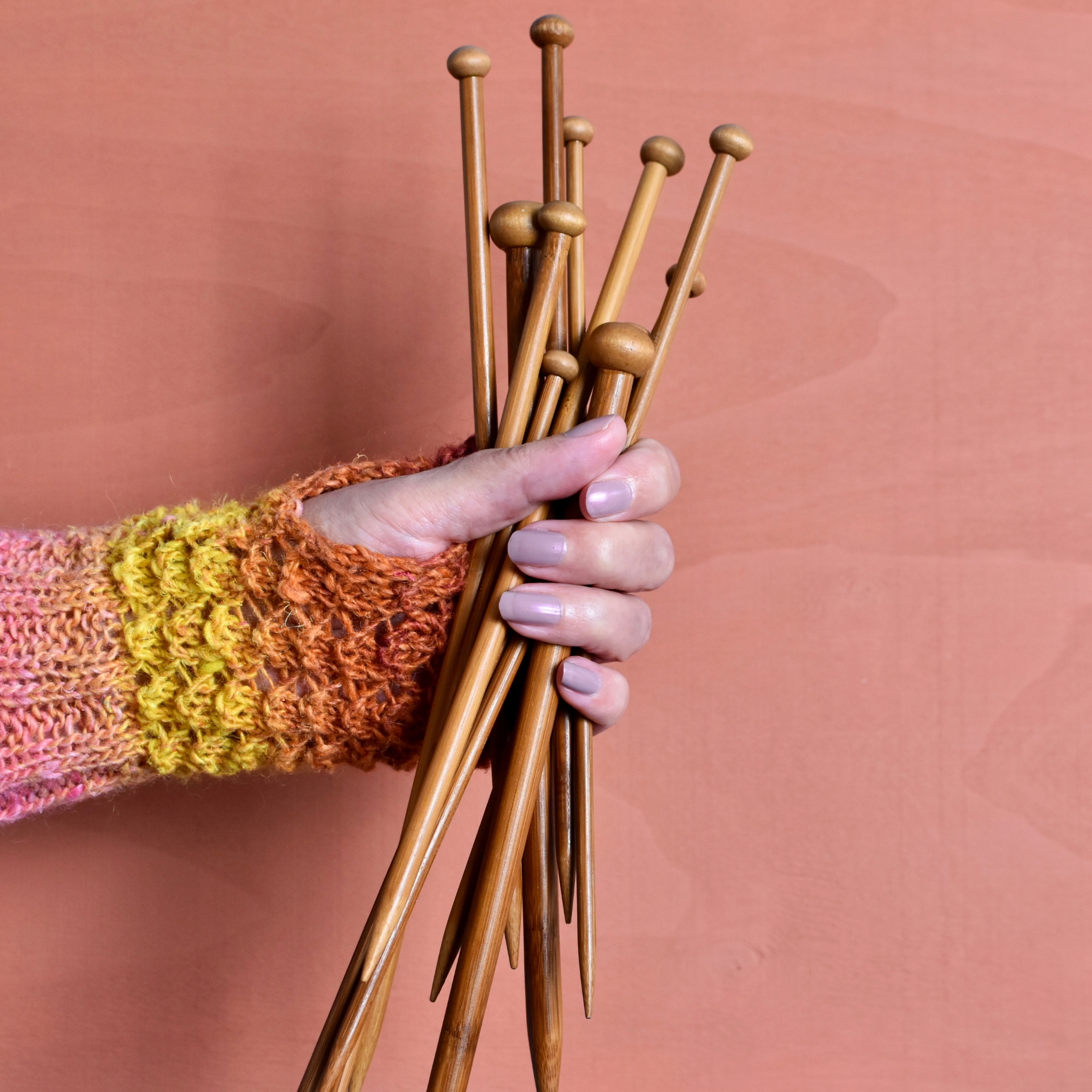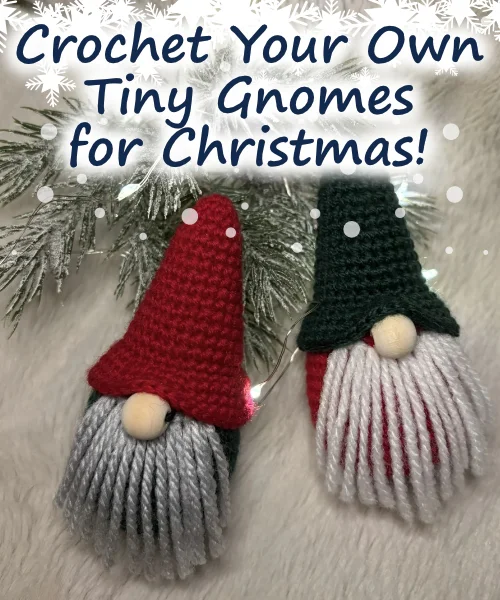In this article:
I am so happy that you are here. It means that you just have started (or soon are going to start) knitting! Knitting is an ancient craft that brings joy and creativity to countless people around the world. Obviously, the most essential tool that every knitter must become familiar with is the knitting needle. With various materials, lengths, and most importantly, sizes, the variety of knitting needles can be a bit overwhelming for beginners. Fear not! This comprehensive knitting needle size chart is here to guide you through the maze of options. We’ll help you choose the perfect needle for your next project.
Understanding Needle Sizes:
Knitting needles come in different sizes. They are designed to accommodate various yarn thicknesses and stitch patterns. The size of a needle is usually denoted in either US sizes, metric system, or both. The US sizes range from 0 to 50, while metric sizes are measured in millimeters. Please note that different countries might use different sizing systems. Thus, it’s very helpful to be familiar with both. A bit confusing so far, isn’t it? Don’t worry, the size chart comparison is here to help.
Common Needle Materials in short:
- Wooden Needles:
- Pros: Lightweight, warm to the touch, and great for those with hand discomfort.
- Cons: Can break if mishandled, may be too thick for some projects.
- Metal Needles:
- Pros: Durable, smooth, and excellent for faster knitting.
- Cons: Cold to the touch, which may be uncomfortable for some knitters.
- Plastic Needles:
- Pros: Lightweight, affordable, and great for beginners.
- Cons: Not as durable as metal or wooden needles.
- Bamboo Needles:
- Pros: Lightweight, flexible, and provide good grip.
- Cons: Can break if not handled carefully.
- Carbon Fiber Needles:
- Pros: Lightweight types of knitting needles, strong, and warm to the touch.
- Cons: More expensive than other materials.
Size Chart Breakdown:
- US Needle Sizes:
- Ranges from 0 to 50, with smaller numbers indicating smaller needles.
- Commonly used for standard yarn weights.
- Metric Needle Sizes:
- Measured in millimeters, ranging from 2 mm to 25 mm.
- Useful for international patterns or yarns labeled with metric sizes.
- Recommended Yarn Weight for Each Size:
- Match your needle size to the recommended yarn weight for optimal results.
- Lighter yarns (fingering, lace) pair well with smaller needles, while heavier yarns (bulky, super bulky) require larger needles.
- Gauge and Tension:
- Always check the pattern’s recommended knitting gauge and tension to ensure your needle size aligns with the desired outcome. There is room to experiment, though.
- Adjust your needle size as needed to achieve the correct gauge.
Knitting Needles and Crochet Hooks, Size Equivalent Chart:
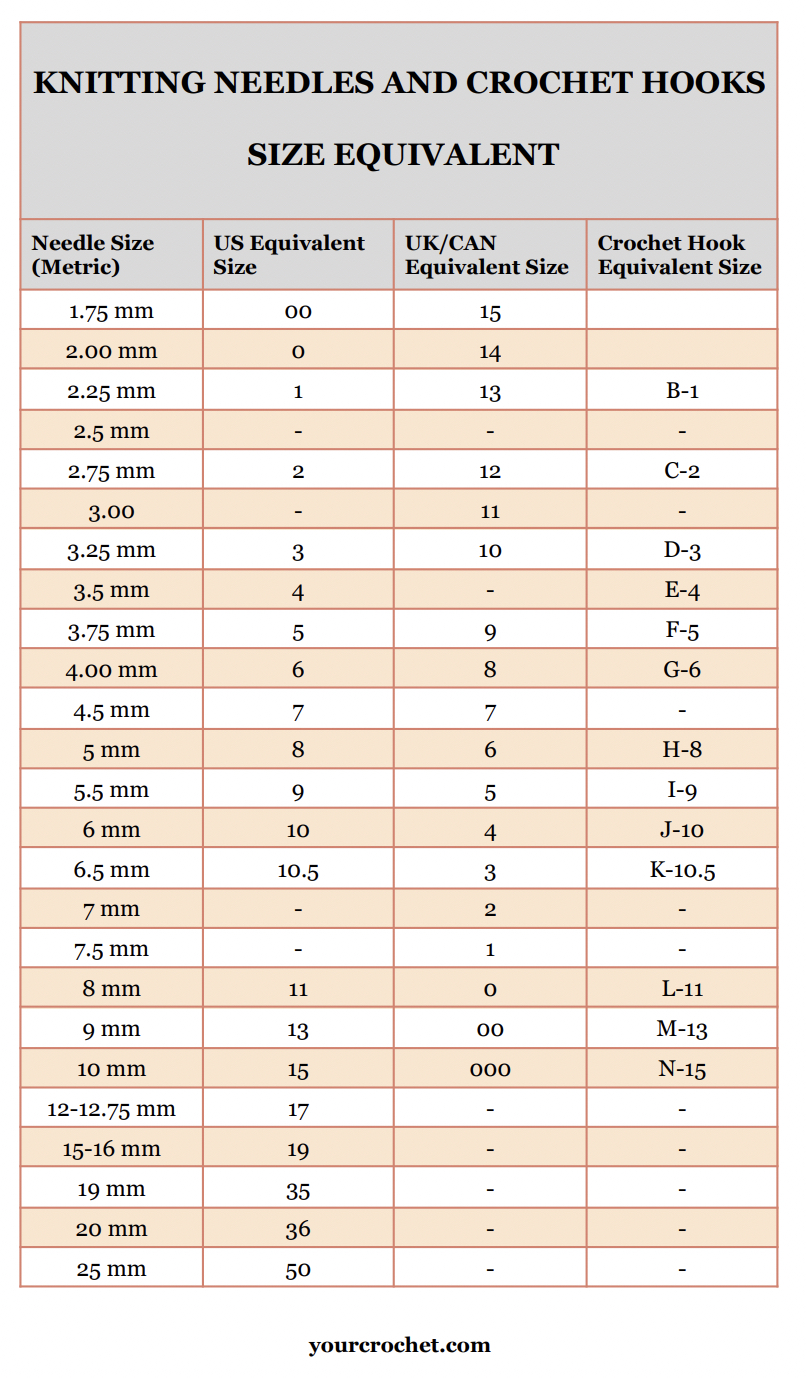
FAQ:
How do I know what size knitting needles to use?
You will find the size of the knitting needles you need on the yarn label. Look for a graphic of knitting needles – next to it will be a recommended knitting needle size.
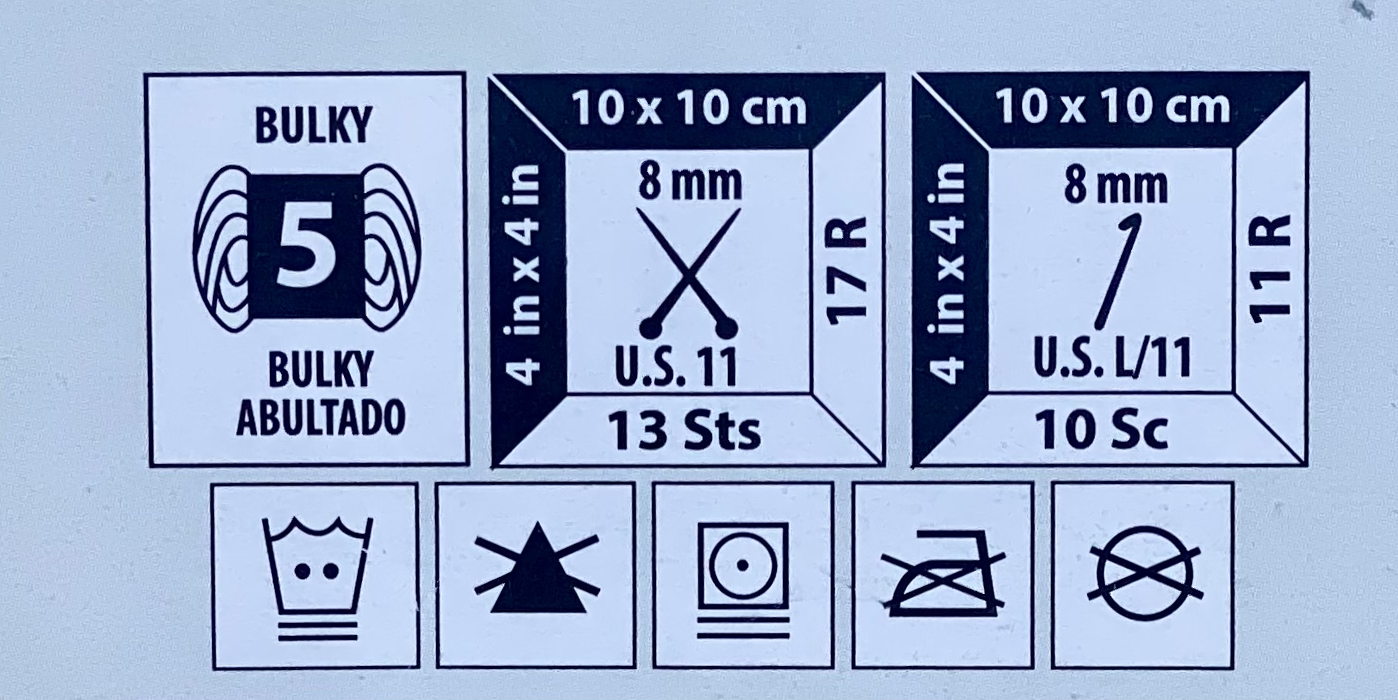
You will also find the yarn and knitting needle size recommendation with the pattern you want to knit.
I am beginner. What size of the knitting needle should I start with?
When you are just learning to knit, medium sizes of knitting needles are the best. US Size 8 (5.0 mm) is often considered a standard size and is commonly used for worsted weight yarn. For length of the needle, a 10-inch needle is usually a good size to start with. Longer needles can be harder to operate.
What is the most commonly used knitting needle size?
The most common knitting needle sizes used by knitters can vary depending on the type of project, crafting yarn weight, and personal preferences. However, there are some needle sizes that tend to be more frequently used across a range of projects. Here are some of the most common knitting needle sizes and project that they are used for:
- US Size 8 (5.0 mm): This is often considered a standard size and is commonly used for worsted weight yarn. Many patterns, especially for scarves, hats, and sweaters, recommend size 8 needles.
- US Size 7 (4.5 mm): Slightly smaller than size 8, this size is popular for achieving a tighter gauge. It’s often used for finer worsted weight or thicker sport weight yarns.
- US Size 10 (6.0 mm): A larger needle size, commonly used for bulkier yarns. This size is favoured for making quick and cozy projects like blankets and chunky scarves.
- US Size 6 (4.0 mm): A versatile size used for lighter worsted weigh, Dk weight, or heavier sport weight yarns. Many sock patterns also recommend size 6 needles.
- US Size 9 (5.5 mm): Slightly larger than the standard size 8, it’s often chosen for achieving a looser gauge. Suitable for a variety of worsted weight projects.
- US Size 5 (3.75 mm): Commonly used for sport weight yarn and lighter worsted weight projects. This size is popular for making garments with finer yarn.
- US Size 11 (8.0 mm): A larger needle size suitable for super bulky yarns. Ideal for creating warm and quick-to-knit projects like oversized scarves and blankets.
What happens if you use the wrong size knitting needles?
Using a larger needle size than suggested will give you looser, more open stitches, as well as making your finished piece larger. Using a smaller needle size will give you tighter, denser stitches, and your finished piece will end up being smaller. You will not get needle gauge foreseen by the pattern you’re making.
Although you can use the different recommended needle size on purpose, I definitely would not recommended it for beginners.
Conclusion:
Navigating the world of knitting needles may seem daunting at first, but armed with the knowledge of this comprehensive size chart and out pointers, you’ll be well-equipped to choose the right needle for any project. Remember to consider the yarn weight, pattern gauge, and your personal knitting style when selecting your needles. Happy knitting!
You may also like:



